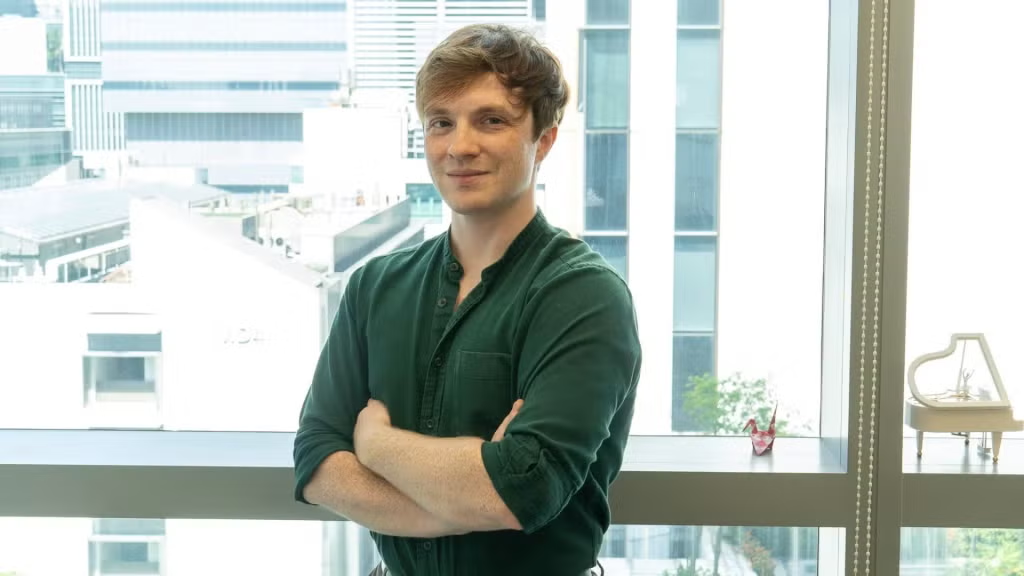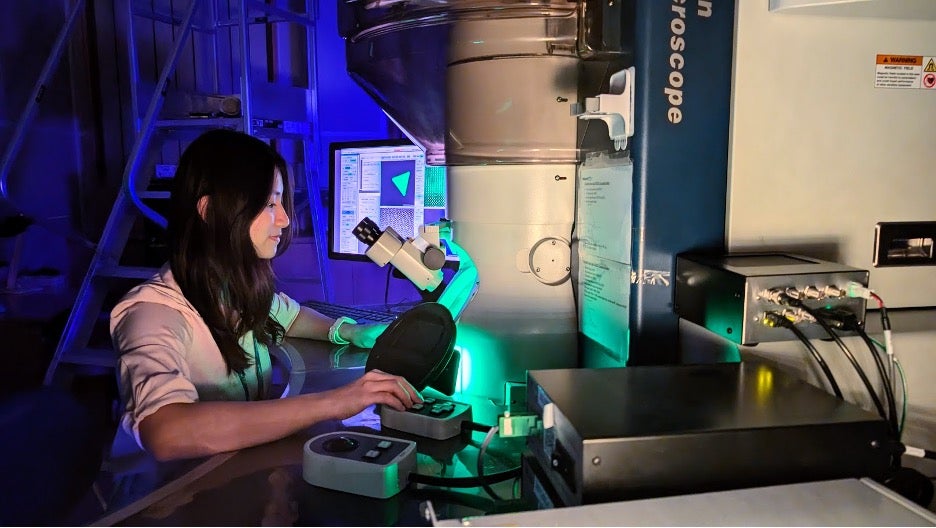
Researchers in Dr. Andrew B. Wong’s lab have built model electrode materials that lets them watch— and quantify—how tiny variations in local (micro)environment dictate the outcome of the electrochemical reduction of carbon dioxide (CO₂RR). CO2RR uses renewable energy to convert CO2 into useful chemicals such as ethanol and ethylene towards the broader goal of achieving carbon neutrality and sustainability.
What is the “microenvironment” and why does it matter?
In electrocatalysis, the microenvironment refers to the local conditions that affect the chemical and transport surrounding the catalyst material: local CO₂ and intermediate concentrations, pH, ion activities, wetting state, and electric field within a few nanometers of the catalyst surface. These parameters often change dramatically during operation and can override the intrinsic activity of the material itself. As a result, the identical catalyst material can have drastically different performance in converting CO2to useful materials.

A Tunable Test‑bed System for Improving Our Fundamental Understanding
The team fabricated quasi‑periodic copper nanowire bundles bordered by adjustable micro‑grooves on a rigid copper foil. Unlike commercial gas‑diffusion layers (GDLs), this catalyst provides the geometric regularity required for modelling and rationally understanding the connection between interfacial structure, local microenvironment, and CO2 conversion performance.
“In typical systems, the disordered structures make the cause and effect hard to understand. Our system lets us rationally understand and tune the interface geometry like a knob, so we can see how the microenvironment is affected. Then, we can see how the microenvironment improves or lowers the CO2RR performance. By seeing the clear cause and effect, we can see principles for improving performance in scalable systems,” said Dr Wong.
Dr. Wong’s research group is now developing new approaches to understand the local microenvironment towards the broader goal of understanding how electrochemical CO2 can be scaled up to meet global sustainability challenges.
Read More: https://pubs.acs.org/doi/10.1021/jacs.4c13494




